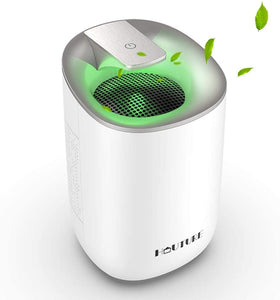Dehumidification with dehumidifiers
Posted by XieYvonne on
With mobile dehumidification with machines, there are various methods of extracting moisture from the room air: air dehumidification by adsorption or by cold. Despite their physical differences, both processes have many areas of application in which they can clearly demonstrate their respective advantages. The procedures are briefly explained below:
The function of adsorption drying is very similar to chemical dehumidification. In the adsorption dryer, the humid air is passed through a desiccant that binds the moisture. In the next step, the moisture is removed from this desiccant using warm air and thus regenerated. The result is two air flows: on the one hand, warm, moist regeneration air and, on the other hand, the dry air. One advantage of the adsorption mini dehumidifier is that it offers high dehumidification performance even at very low temperatures. One disadvantage is that the dehumidification performance can drop significantly in the case of dirty room air.

With cold or condensation drying (condensation drying), the moist air is cooled in the refrigeration dryer. If the air temperature is lowered to at least the dew point temperature, the moisture precipitates as condensation and can be removed or collected. The air dried in this way can be heated again by the waste heat generated in the cooling process and the energy released by condensation. Condensation dehumidifiers have the decisive advantage that they dry much more gently and energy-efficiently than, for example, andsorption devices. In addition, they retain their full performance even when they are used in areas exposed to dust and dirt.
